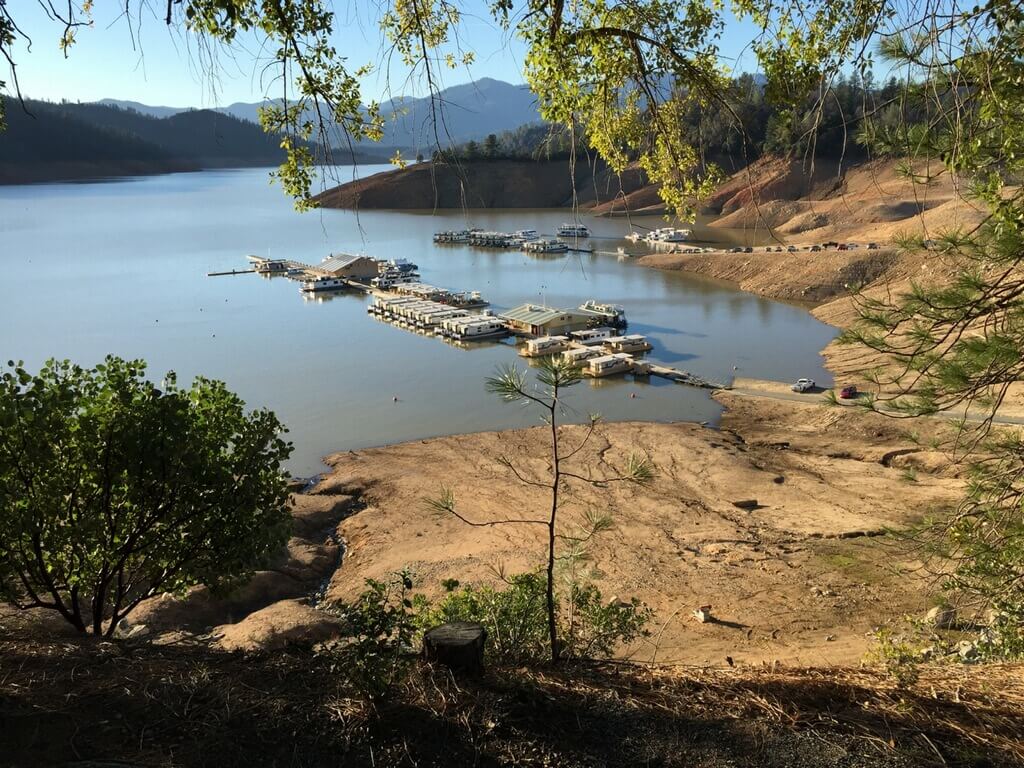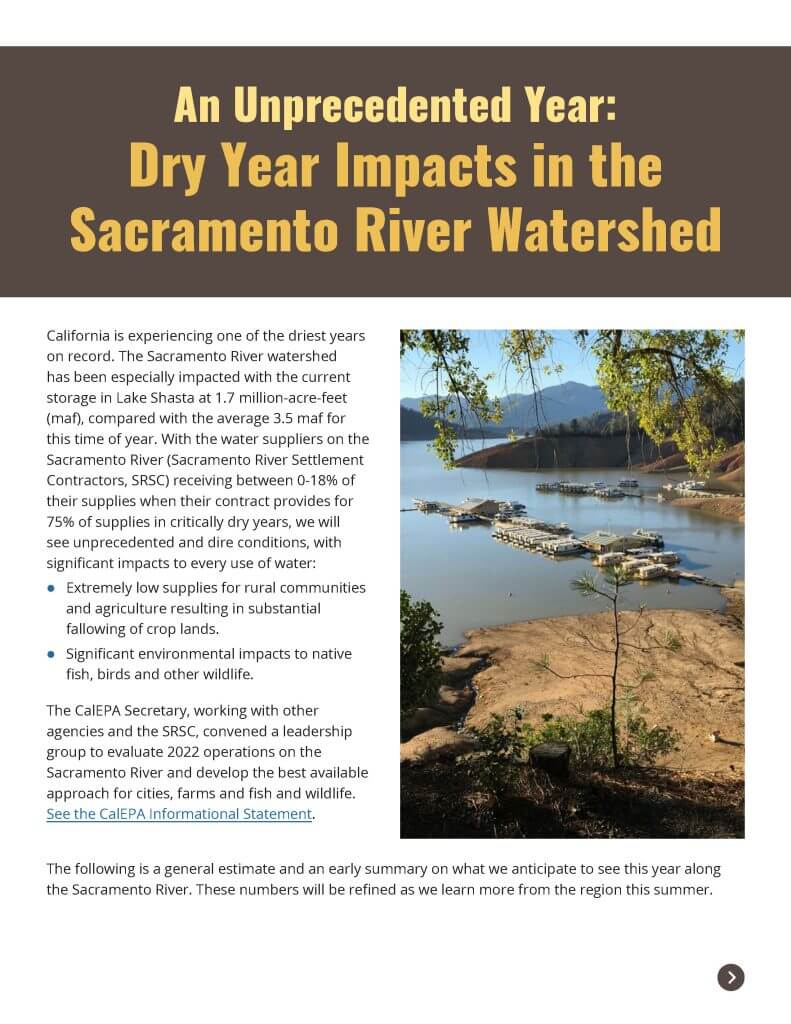By David Guy
The State Water Board today adopted another emergency curtailment and reporting regulation for the Sacramento-San Joaquin Delta watershed. With a series of dry years and a current water year having both the wettest and driest months we have seen; we appreciate the State Water Board’s efforts–despite the devastating water year in the Sacramento Valley–to implement the water rights priority system and to begin preparing for next year.
The Sacramento Valley depends upon an orderly water rights priority system in California to serve multiple benefits in the region and the water resources managers in the Sacramento Valley are working hard in the face of this uncertainty to advance ridgetop to river mouth water management and to better prepare for next year. Importantly, these regulations are working so far in 2022 as the State Water Board updates the curtailment notices every week based on current hydrology and the unavailability of natural flows throughout the Bay-Delta watershed, including the Sacramento Valley. There have also been water transfers this year, working within the water rights system, to ensure water for public health and safety in urban areas, for transfers to neighbors, and for refuges, Chinook salmon, and other environmental benefits.

To be sure, there are significant impacts in the Sacramento Valley this year as a result of various curtailments. According to Dr. Sumner et al. from UC Davis, The Continued Drought in 2022 Ravages California’s Sacramento Valley Economy with a projected $1.3 billion in lost economic value added; 14,300 lost jobs; $732 million in lost labor income; and supply chains are devastated. Community leaders in the region are working with state and federal agencies to help people and communities, many of which are disadvantaged, work through this very challenging year without much water.
Fish and wildlife will also be significantly impacted, thus there is a concerted effort to re-manage water in very creative ways for the benefit of salmon and birds using the Pacific Flyway. Many of these programs are continuing in 2022 as state and federal agencies, water suppliers and conservationists are working together to help fish and wildlife survive in this challenging year.
The water rights system is an important foundation for our state and the implementation of the water rights system is essential to economic, social and environmental stability and sustainability throughout California. The current system for water rights has generally worked during the past several dry periods–not perfect–but surprisingly well. Yes, there have been significant reductions in water supplies throughout both rural and urban areas in California as already described, as cities and rural communities, farms, refuges and managed wetlands, fisheries, hydropower and recreation have all suffered without water. This, however, is how the system is intended to work and it is particularly important for managing precious water supplies during drought periods because it provides a known and well-established legal framework, administers water resources in an orderly manner, and it calls on water managers to creatively use and stretch available supplies for all beneficial purposes.
To be sure, we have seen plenty of pain and hardship as a result of dry years and the lack of available surface supplies. To help minimize this pain and provide for an orderly system that makes the water rights system work for California, we will continue to help organize and work with the various water suppliers in the Sacramento Valley as part of our effort to coordinate with state and federal agencies to help facilitate and continually improve an orderly process to serve multiple benefits during dry years in the region. Water right holders in Northern California and throughout California invest in the State Water Board’s Water Rights Fund to ensure the State Water Board has capacity and can modernize the effective administration of the water rights priority system, particularly in dry years when surface supplies are limited. The recent state budget has also augmented this funding to help with the dry years.
We would welcome and thoughts and other ideas at info@norcalwater.org.
Click below for more details.





Glad it works for you..
SWRCB Resolution 2021-0050
“The colonization, displacement, and genocide of Native American people in the United States have contributed to the loss of water resource and watershed management practices that supported Native American people’s traditional food sources and ways of life. Watersheds are now primarily managed through large-scale diversion of water for municipal, industrial, agricultural, and commercial beneficial uses to the detriment of traditional, local, and cultural uses and without compensation, recognition, or replacement. Historical land seizures, broken promises related to federal treaty rights, and failures to recognize and protect federal reserved rights have resulted in the loss of associated water rights and other natural resources of value, as well as cultural, spiritual, and subsistence traditions that Native American people have practiced since time immemorial.”